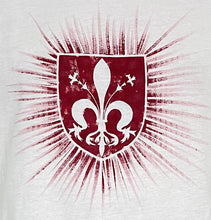Florence, or Firenze in Italian, is the most populous city in Tuscany, Italy. The city was founded by Roman decree in 59 BCE. At its beginning, it was a military colony or garrison town for soldiers. Over the following centuries, it gradually grew into a prosperous commercial center. This period of Roman rule ended after an invasion by the Ostrogoths in the 5th century, then the Byzantines in the 6th, and then the Lombards soon after. The second rise to power came after Charlemagne reconquered the city and made it bard of the Duchy of Tuscany. In the 12th century, powerful families such as the Peruzzi and Bardi began to monopolize the trade and banking activities in the city. These powerful families eventually gave rise to a group of guilds, composed of 7 major ones and a few smaller, each vying for power. As the city's population grew, it became more prosperous until the summer of 1348, when the Black Plague struck. As the city healed from the plague, the Medici family, under Cosimo de’ Medici, experienced a meteoric rise to power from wealthy merchants to aristocrats. The Medicis were virtually in control from the early 15th century to the early 18th century, when the line ended with Gian Gastone. In the next century, Florence was governed by the house Lorraine, then Napoleon, and finally the Hapsburgs before joining the unified Italy as its capital. In 1870, the capital moved to its current city of Rome. In modern times, the city has remained one of the largest and most prosperous cities in Italy.
The escutcheon of Florence is a fleur-de-lis or Florentine lily. Despite the name, the fleur-de-lis actually depicts a flowering iris, which grows naturally in the region.




